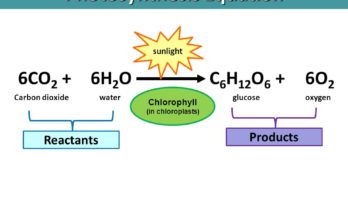
Introduction
Photomolecular evaporation is a phenomenon we encounter daily, from sweat evaporating off our skin to the morning dew disappearing under the sun’s warmth. But recent scientific research has uncovered a mysterious aspect of evaporation that challenges conventional wisdom. Scientists have observed that water held within a hydrogel, a sponge-like material, can evaporate at rates significantly higher than what traditional thermal energy principles dictate.
The Astonishing Discovery
Researchers at MIT embarked on a quest to unravel this enigma. After conducting a series of experiments and simulations about photomolecular evaporation, they made a groundbreaking discovery: under specific conditions, at the interface where water meets air, light can directly induce evaporation, outperforming heat. This revelation challenges our understanding of evaporation and has profound implications.
Shedding Light on the Phenomenon
The research about photomolecular evaporation, led by MIT postdoc Yaodong Tu, Professor Gang Chen, and their team, suggests that this unique phenomenon could impact various areas, including atmospheric science, industrial processes, and solar-powered desalination.
How Light Powers Evaporation
The surprising aspect of this discovery is that water itself does not absorb light to a significant degree. In standard evaporation processes, such as solar desalination, absorbing sunlight is a vital step to generate the necessary heat. However, the MIT researchers found that in the presence of a hydrogel, a material that doesn’t absorb light either, light can trigger an extraordinary evaporation rate.
The Photomolecular Effect
The phenomenon, aptly named the “photomolecular effect,” occurs right at the boundary between water and air, particularly at the surface of the hydrogel material. It is believed that this effect might also manifest at the sea surface or on the surfaces of droplets in clouds or fog. The team’s experiments demonstrated that the effect depends on the color of light, with green light being most effective. Unlike heat, which is color-independent, this light-driven evaporation showcases the unique power of photons.
Implications and Applications about Photomolecular Evaporation
The implications of the photomolecular effect are far-reaching. It may contribute to our understanding of fog and cloud formation, which could lead to improved climate models. Additionally, this discovery may revolutionize industrial processes, especially in the field of solar-powered desalination. By harnessing light instead of heat, it might be possible to skip the step of converting sunlight to heat, potentially making desalination more efficient and cost-effective.
A Brighter Future for Desalination
In the world of desalination, this discovery could be a game-changer. Traditional desalination processes involve two steps: evaporating water into vapor and then condensing it back into fresh water. With the photomolecular effect, there’s the potential to achieve high efficiency on the evaporation side, drastically increasing the amount of water produced per square meter. This could lead to more affordable and efficient desalination methods.
Beyond Desalination
The applications of this photomolecular evaporation extend beyond desalination. It could be used in processes that require efficient drying, and it may also be leveraged in evaporative cooling systems. The phase change that occurs during evaporation could provide the foundation for highly efficient solar cooling technologies.
Collaboration and Exploration
While these findings are astonishing, the research team is not resting on its laurels. They are collaborating with other groups to replicate the results and further explore the implications of the photomolecular effect. Overcoming skepticism and advancing the understanding of this phenomenon is a top priority for the MIT researchers.
Conclusion
The enigma of evaporation, powered by light, opens up exciting possibilities in the realms of science and technology. From climate modeling to solar desalination, this discovery may reshape the way we approach critical challenges. As we continue to unlock the secrets of the natural world, our ability to harness the power of light takes us one step closer to a sustainable and efficient future.
FAQs
1. How does the photomolecular effect impact climate modeling? The photomolecular effect may play a role in fog and cloud formation, which is essential for improving climate models’ accuracy.
2. Can the photomolecular effect be used for industrial applications other than desalination? Yes, this phenomenon may have applications in processes that require efficient drying, and it could be harnessed for highly efficient evaporative cooling systems.
3. What is the potential of the photomolecular effect in solar desalination? This discovery could significantly increase the efficiency of the evaporation process in solar desalination, potentially leading to cheaper and more effective desalination methods.
4. How can the photomolecular effect be harnessed in evaporative cooling systems? By using the phase change that occurs during evaporation, this effect can provide the foundation for highly efficient solar cooling technologies.
5. What is the importance of replicating these findings with other research groups? Replicating the results and collaborating with other research teams is crucial to validate the photomolecular effect and advance our understanding of this phenomenon.


